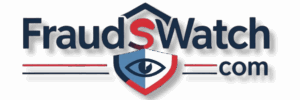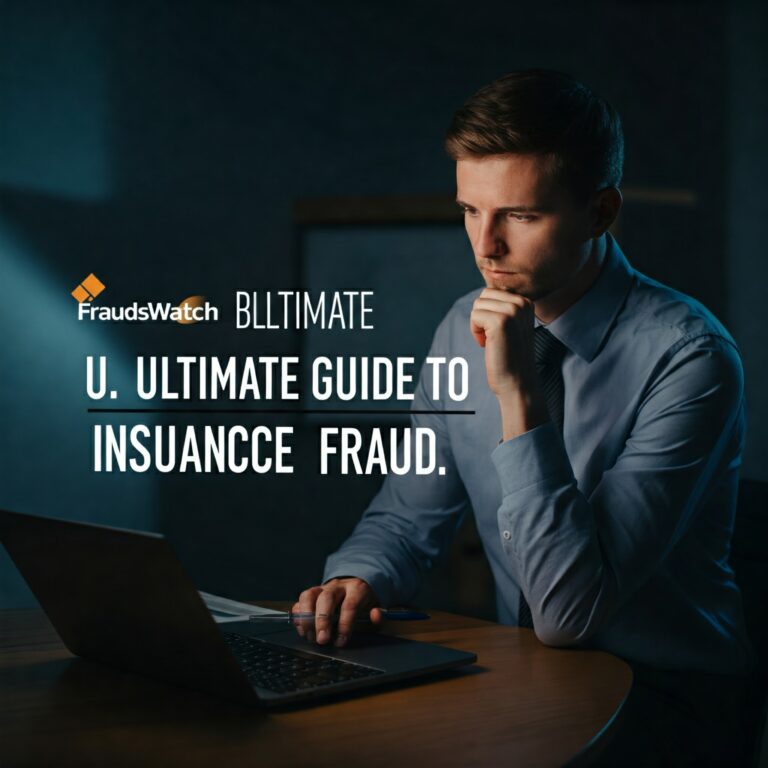Navigating the Minefield: A Guide to Identifying and Avoiding Student Loan Scams

The landscape of student loan debt has become a perilous one, not only due to the sheer financial burden carried by millions but also because of the ever-increasing sophistication of scammers seeking to exploit vulnerable borrowers. As of early 2025, the outstanding student loan debt in the United States has reached monumental figures, creating a vast pool of individuals susceptible to fraudulent promises of relief. This report provides a comprehensive analysis of the current student loan scam environment, detailing the types of scams prevalent, the red flags to watch for, proactive measures to protect oneself, steps to take if victimized, and legitimate resources available for assistance. Understanding these elements is crucial for borrowers to navigate the complexities of student debt safely and avoid falling prey to predatory schemes.
The Alarming Rise of Student Loan Scams: Understanding the Threat in 2025
The convergence of massive outstanding student debt, the inherent complexities of the loan system, and the financial desperation of many borrowers has created a fertile ground for fraudulent activities. Regulatory bodies are actively working to combat these scams, but borrower vigilance remains the first and most critical line of defense.
The Sheer Scale of Student Debt: A Multi-Trillion Dollar Problem
The magnitude of student loan debt in the United States is staggering, painting a clear picture of why this sector is a prime target for fraudsters. As of the first quarter of 2025, total student loan debt has climbed to approximately $1.78 trillion , a figure that marginally increased from $1.777 trillion reported at the end of 2024. This debt is shouldered by an estimated 42.5 million Americans , with federal loans accounting for the lion’s share—over 90% of the total. The average federal student loan debt per borrower reached a record high of $39,075 in March 2025 , while the total average balance, including private loans, could be as high as $41,618.
The resumption of overall student loan debt growth in 2024, following a temporary year-over-year decline in 2023 , suggests that pandemic-related payment pauses and relief measures did not fundamentally alter the upward trajectory of indebtedness. These pauses, mentioned in sources like and , may have offered temporary respite, but underlying factors such as rising tuition costs and borrowing rates continue to fuel debt accumulation. As these pauses end and payments resume, many borrowers face renewed financial pressure, potentially heightening their vulnerability to scams that promise quick and easy relief. The dominance of federal student loans in the debt landscape means that scams impersonating federal agencies or programs—a common tactic noted by the Federal Trade Commission (FTC) and consumer protection resources —are particularly insidious. Such impersonations target the largest segment of the borrower population and exploit the inherent trust individuals may place in government communications, making these fraudulent approaches more likely to succeed.
Why Borrowers Are Prime Targets: The Confluence of Debt, Complexity, and Desperation
Student loan borrowers are uniquely vulnerable due to a combination of factors that scammers readily exploit. The process of managing financial aid and loans is often described as confusing, emotional, and overwhelming, creating conditions ripe for exploitation. This emotional and cognitive load can impair rational decision-making, making borrowers more susceptible to deceptive offers.
Frequent policy changes concerning student loans have exacerbated this confusion, leaving many borrowers uncertain about their repayment options. This constant “noise” and ambiguity create what some experts describe as a “perfect storm” for scammers, who thrive in environments of uncertainty. The inherent complexity of the student loan system itself—with its myriad of servicers, diverse repayment plans, and intricate forgiveness programs—further contributes to borrower susceptibility. Scammers capitalize on this by offering “simplified” solutions or “guaranteed results” that prey on this confusion.
The significant financial burden of student loans often leads to considerable psychological distress, including symptoms of depression, anxiety, and general ill-health. This desperation for relief can make borrowers more receptive to promises of quick fixes, even if those promises seem too good to be true. A particularly critical period of vulnerability arises with events like the resumption of involuntary collections on defaulted federal student loans, anticipated around May 5, 2025. This development is likely to induce significant anxiety and urgency, especially for the substantial number of individuals already in default. These borrowers become highly susceptible to scams offering to prevent wage garnishment or other harsh collection actions.
Adding to borrower concerns, reports have surfaced suggesting a potential shift in regulatory focus. For instance, information from May 2025 indicates that the Consumer Financial Protection Bureau (CFPB) might have been instructed to “deprioritize” some predatory student loan cases, focusing more on “actual fraud” rather than what might be perceived as “wrong choices” by consumers. If scammers perceive a reduction in oversight, it could embolden them, making borrower vigilance and self-protection even more paramount.
Furthermore, the widespread transfer of loans between servicers during pandemic-related payment pauses and subsequent servicing failures—such as billing errors, dissemination of incorrect information, and significant processing delays reported by the CFPB —have directly fueled borrower confusion and frustration. This chaotic environment creates a direct pathway for scammers who offer “assistance” in navigating these very issues, often for a substantial fee, thereby preying on the breakdown of trust with official loan servicers.
Recent FTC Crackdowns and a Glimpse into 2025 Enforcement: The Fight Against Fraud
Despite the challenging environment, regulatory bodies like the Federal Trade Commission (FTC) are actively working to combat student loan scams. Recent enforcement actions highlight the ongoing efforts to protect consumers. For example, in March 2025, the FTC named additional defendants in its ongoing case against Superior Servicing. This company and its operator were initially charged in November 2024 with pretending to be affiliated with the U.S. Department of Education and falsely promising loan forgiveness, ultimately defrauding borrowers of millions through illegal advance payments.
A significant tool in the FTC’s arsenal is the Government and Business Impersonation Rule, which took effect in April 2024. This rule makes it illegal to falsely pose as government entities or businesses and carries substantial penalties of up to $53,088 per violation. In its first year, the FTC initiated five cases under this rule and was instrumental in shutting down 13 websites that were illegally impersonating the Commission itself. Notably, the actions against Superior Servicing and another entity, Panda Benefit Services, LLC, were brought under this new impersonation rule, underscoring the prevalence of this tactic in student loan debt relief schemes. The FTC’s focus on enforcing this rule strongly suggests that impersonation is a dominant and highly damaging tactic that authorities are prioritizing. Consequently, borrowers must exercise extreme caution with any entity claiming government affiliation.
Throughout 2024, the FTC’s efforts led to securing over $63 million in refunds for consumers affected by deceptive practices in the higher education and debt relief sectors. One notable 2024 action involved a company penalized $7.4 million for impersonating government agencies, partly by using phrases like “Biden Loan Forgiveness,” and for charging illegal advance junk fees. This company was also banned from the debt relief industry. Another case saw a company facing $28.7 million in civil penalties for violations related to the Do Not Call Registry and deceptive acts, including purchasing consumer contact information under false pretenses.
The consistent theme of illegal advance fees is evident in many FTC cases. Scammers frequently take hundreds or thousands of dollars from consumers for promised services that are never delivered, leaving borrowers in a worse financial state. This pattern across numerous enforcement actions highlights that demanding payment before providing any legitimate service is a core operational model for these fraudsters, making the advice to “never pay upfront fees” a critical defense for borrowers. The FTC has a history of such enforcement, including facilitating refunds to consumers harmed by schemes like Arete Financial Group (June 2023) and Lanier Law (January 2024). These actions signal a continued commitment to holding fraudulent operators accountable.
Unmasking the Deceivers: Common Types of Student Loan Scams Today
Scammers employ a variety of tactics to defraud student loan borrowers. Recognizing these common scam archetypes is the first step towards effective self-protection.
The “Too Good to Be True” Forgiveness and Cancellation Scams
Perhaps the most alluring and widespread type of student loan scam revolves around promises of immediate and total loan forgiveness or cancellation. Scammers dangle the prospect of complete debt freedom, often using aggressive advertising language to create a sense of urgency. Borrowers might encounter claims such as, “Act immediately to qualify for student loan forgiveness before the program is discontinued,” or “Your student loans may qualify for complete discharge. Enrollments are first come, first served”. They may also cite fictitious “new laws” or warn of discontinuing programs to pressure individuals into quick decisions.
These promises are fundamentally false because legitimate government forgiveness programs, such as Public Service Loan Forgiveness (PSLF) or benefits through Income-Driven Repayment (IDR) plans, typically require many years of qualifying payments and/or employment in specific fields. The effectiveness of these “immediate forgiveness” scams is amplified by borrower confusion surrounding these legitimate, albeit complex, government programs. Scammers essentially exploit the existence of real forgiveness pathways by offering a fraudulent, expedited version. Borrowers, aware of these programs but perhaps not the stringent, lengthy requirements, are tempted by what appears to be a shortcut to a highly desirable outcome. The complexity and long timelines of genuine programs make the scammers’ “easy” alternative all the more appealing.
Deceptive Debt Consolidation Ploys and Hidden Costs
Student loan consolidation can be a legitimate financial strategy, but scammers twist it into a tool for deception. They may aggressively push borrowers towards loan consolidation, often being vague or “sketchy on the terms”. The primary goal for the scammer is often simply to charge a fee for the “service” of consolidation, without adequately explaining the potential downsides or even if consolidation is appropriate for the borrower’s situation.
A significant danger in these schemes is the consolidation of federal student loans into private loans. This action can lead to the irreversible loss of crucial federal loan benefits, including access to income-driven repayment plans, eligibility for federal loan forgiveness programs (like PSLF), and more generous deferment and forbearance options during financial hardship. While consolidation might sometimes result in a lower monthly payment by extending the repayment period, scammers often downplay or entirely omit the fact that this typically means paying substantially more in interest over the full term of the loan. They may also fail to clearly disclose the new interest rate or any associated fees.
Consolidation scams are particularly insidious because they often masquerade as a helpful financial maneuver. Borrowers may already be exploring consolidation options independently, making them more receptive to these offers. This pre-existing interest can lower their guard against a fraudulent version of the service, especially if the scammer emphasizes only the short-term benefit of a reduced monthly payment, while the long-term negative consequences remain hidden or obscure.
Advance Fee Fraud: Paying for “Help” You’ll Never Receive
A core tactic underpinning many student loan scams is the demand for upfront or recurring monthly fees for promised services. These fees might be labeled for “enrollment,” “processing,” “service,” “subscription,” or “maintenance”. Scammers can extract hundreds or even thousands of dollars through these illegal advance payments, providing little to no actual assistance in return and often leaving consumers in even greater debt.
Crucially, it is illegal for companies to charge fees before they provide help with federal student loan debt relief. Many of the services for which these companies charge—such as applying for income-driven repayment plans, consolidating federal loans, or exploring forgiveness programs—are available entirely free of charge through one’s federal loan servicer or directly via the official StudentAid.gov website. The prevalence of this advance fee model highlights a significant information gap: many borrowers may be unaware of the free resources available to them, or they may lack confidence in navigating the official system alone. This gap is precisely what scammers exploit, successfully charging for services that should cost nothing.
Impersonation Scams: Fake Government Officials and Loan Servicers
Impersonation is a rampant and highly effective tactic used by student loan scammers. They frequently pretend to be affiliated with the U.S. Department of Education, Federal Student Aid (FSA), or other government agencies. To appear legitimate, they use official-sounding names like “Student Loan Help Center,” “Federal Student Aid Department,” or names incorporating terms such as “Federal” or “National”. They may also use official-looking seals, logos, and letterheads to enhance their deceptive facade. The FTC’s Government and Business Impersonation Rule, and recent enforcement actions like the one against Superior Servicing, directly target this widespread deceptive practice.
Beyond government agencies, scammers may also impersonate legitimate student loan servicers. This tactic leverages the authority and trust that individuals naturally place in government entities or the companies that legitimately manage their loans. The sophistication of these impersonation attempts can be alarming; some scammers may even possess accurate information about the borrower or their loan balance, possibly obtained through data breaches or by tricking borrowers into revealing it earlier. When a scammer presents information that the borrower believes is private or known only to legitimate entities, it significantly boosts the credibility of the impersonation, making the scam much harder to detect and shifting the threat from generic attempts to highly targeted, personalized attacks.
Identity Theft Traps: The Danger of Sharing Your FSA ID and SSN
Beyond immediate financial loss from fees, many student loan scams aim to steal sensitive personal information for broader identity theft. A primary target is the borrower’s Federal Student Aid (FSA) ID, which consists of a username and password. Scammers frequently request this information under the guise of “helping” with loan applications or forgiveness programs.
It cannot be stressed enough: the U.S. Department of Education and its official partners, including loan servicers, will NEVER ask for an FSA ID password. The FSA ID is used to sign legally binding documents electronically and carries the same legal weight as a written signature. Sharing it is akin to giving someone a blank check and provides scammers with access to the borrower’s entire federal student aid account. With this access, they can make unauthorized changes to loans, redirect communications, cut the borrower off from their actual servicer, or steal personal information for wider identity theft.
Scammers may also solicit other highly sensitive data, such as Social Security Numbers (SSNs), bank account details, or credit card numbers. FAFSA identity theft, for instance, involves the unauthorized use of such personal information to fraudulently apply for federal student aid. The consequences of such identity theft are severe and can include profound financial hardship as aid is diverted, disruption to academic progress, significant damage to credit scores, and even complex legal issues. The request for an FSA ID is particularly dangerous because this credential unlocks access to a wealth of Personally Identifiable Information (PII) submitted during the FAFSA process, including SSNs, dates of birth, and financial history. Thus, a compromised FSA ID is a high-value target, not just for manipulating student loans but for enabling comprehensive exploitation of the victim’s financial identity.
Red Flags Waving: How to Spot a Student Loan Scam Before It’s Too Late
Awareness of common scam indicators is crucial for self-protection. If any of the following red flags appear, borrowers should proceed with extreme caution and verify legitimacy through trusted channels.
High-Pressure Tactics and Artificial Urgency: “Act Now or Lose Out!”
A hallmark of many scams is the use of high-pressure tactics and the creation of artificial urgency. Scammers employ aggressive advertising language and may claim that offers are available for a “limited time only,” that “enrollments are first come, first served,” or that borrowers must “act immediately” to qualify for a program before it is allegedly discontinued. They might use alarming phrases like “FINAL NOTICE” or “Time Sensitive” to provoke an impulsive reaction. This psychological manipulation is designed to make the borrower panic and act before they have a chance to think critically, conduct research, or consult with trusted sources. Legitimate federal student loan programs, by contrast, do not operate this way; eligibility is determined by established criteria, not by responding to high-pressure solicitations. These pressure tactics are particularly effective in the student loan context because borrowers are often already experiencing significant financial stress and anxiety about their debts. This pre-existing emotional vulnerability makes them more susceptible to manipulation through artificially induced urgency, as stress can impair cognitive function and lead to more impulsive decision-making.
Demands for Upfront Fees for Free Services: The “Pay for Nothing” Ploy
A major and almost universal red flag is any demand for upfront or recurring monthly fees in exchange for help with federal student loans. As previously noted, it is illegal for companies to charge such fees before services are rendered for federal student loan assistance. Scammers will request payment for services like loan consolidation, changing repayment plans, or applying for forgiveness programs—all of which are available for free through official channels like StudentAid.gov or by working directly with one’s federal loan servicer. These fees may be deceptively labeled as “service,” “subscription,” “enrollment,” “maintenance,” or “processing” charges. The success of these upfront fee demands, despite the availability of free legitimate services, suggests that scammers effectively cultivate a perception of offering “expert” or “insider” assistance. This fabricated expertise appears more valuable or easier to access than navigating the official system, thereby seeming to justify the fee in the borrower’s mind, especially when the official system is perceived as complex and confusing.
Guarantees of Instant Results or Special Access: If It Sounds Too Good To Be True…
Scammers often make outlandish promises of immediate and total loan forgiveness or cancellation. They might also claim to have “special access” to government programs or assert that they can negotiate a “special deal” on the borrower’s behalf with their loan servicer. Such guarantees are invariably false. No legitimate entity can promise immediate and total loan forgiveness for federal student loans; these programs have specific, often lengthy, eligibility requirements. Furthermore, private debt relief companies do not possess the authority to negotiate “special deals” for federal student loans, as terms for programs like income-driven repayment plans are established by federal law. The “guarantee” of results is a psychological tactic designed to overcome a borrower’s natural skepticism by offering a false sense of certainty in an uncertain financial situation. This can be highly persuasive to individuals desperate for a solution, potentially short-circuiting critical evaluation of the offer’s legitimacy. If an offer sounds too good to be true, it almost certainly is.
Requests for Sensitive Personal Information (FSA ID, Passwords, Bank Details): Your Keys to the Kingdom
Any unsolicited request for highly sensitive personal information should trigger immediate suspicion. Scammers frequently ask for a borrower’s FSA ID (username and password). It is a critical rule that the U.S. Department of Education and its official partners will NEVER ask for an FSA ID password. They may also seek other confidential data such as Social Security numbers, credit card numbers, or bank account information. While legitimate government programs like PSLF or IDR plans may require an SSN to verify identity and eligibility, this information will not be requested via unsolicited contact methods. Similarly, the official application for federal student debt relief programs will ask for necessary identifiers like name, date of birth, and SSN, but it will not require an FSA ID, bank account details, or credit card information upfront. Scammers may attempt to normalize the request for an FSA ID by framing it as a necessary part of the “service” they are providing, perhaps suggesting it’s for the borrower’s convenience (e.g., “we’ll handle all the paperwork for you”). This manipulation preys on the borrower’s desire for an easy solution to what they perceive as a complex problem, making an illegitimate request seem helpful.
Unprofessional Communications: Typos, Grammatical Errors, Unofficial Emails/Websites
The professionalism of communications can often be a tell-tale sign. Scam messages—whether emails, letters, or website content—frequently contain noticeable typos, unusual capitalization, improper grammar, or awkwardly constructed sentences. Emails from fraudulent entities often originate from unofficial addresses that do not end in “.gov” or come from suspicious-looking domains (e.g., an address like studentrelief@genericdomain.com instead of an official government domain).
Borrowers should be aware of the official communication channels:
- Emails from the U.S. Department of Education / Federal Student Aid will only come from:
noreply@studentaid.gov,noreply@debtrelief.studentaid.gov, ored.gov@public.govdelivery.com. - Official text messages from FSA will only originate from the short codes 227722 or 51592.
While scammers may use official-looking names, seals, and logos, a careful check of the sender’s email address or the website URL can reveal their lack of legitimacy. However, it is also important to note that some scam communications can appear very formal and well-crafted. Therefore, while unprofessionalism is a strong indicator, its absence does not guarantee legitimacy. A comprehensive assessment, including verification through official channels, is necessary if any other red flags are present.
Table 1: Red Flags vs. Legitimate Practices Checklist
To aid in quick identification, the following table contrasts common scam warning signs with legitimate practices:
| Scam Warning Sign (Red Flag) | Legitimate Practice / What to Expect |
|---|---|
| Pressure/Urgency: High pressure to act immediately, artificial deadlines, “limited time” offers. | No undue pressure. Clear deadlines based on official program rules and eligibility, not on immediate response to an unsolicited offer. |
| Fees: Demands upfront or monthly fees for help with federal student loans or forgiveness programs. | Assistance with federal student loans from official sources (Dept. of Education, loan servicers) is free. No fees to apply for IDR or forgiveness. |
| Guarantees: Promises of immediate, total, or guaranteed loan forgiveness or “special deals.” | Eligibility for forgiveness or repayment plans is based on specific, verifiable criteria. Forgiveness often takes years of qualifying payments/service. No “special deals.” |
| FSA ID Request: Asks for your FSA ID password. | The U.S. Department of Education or its official partners will NEVER ask for your FSA ID password. |
| Communication Source: Emails from non-.gov addresses, generic company names, unofficial websites. | Official communications from.gov email addresses and websites (e.g., StudentAid.gov). Contact from known, verified loan servicers. |
| Contact Initiation: Frequent unsolicited offers via phone, email, text, or social media. | Borrowers typically initiate contact for help. Official communications are usually scheduled or in response to borrower actions. |
| Information Requests: Asks for bank account or credit card numbers for “processing” forgiveness. | Legitimate federal programs do not require bank/credit card info for eligibility or application for forgiveness itself. |
| Professionalism: Communications riddled with typos, grammatical errors, or poor formatting. | Official communications are generally professional, well-written, and error-free. |
Fortifying Your Defenses: Proactive Steps to Avoid Student Loan Scams
Beyond recognizing red flags, borrowers can take several proactive steps to significantly reduce their risk of falling victim to student loan scams.
Verify, Verify, Verify: Dealing Only with Official Channels
The cornerstone of scam prevention is to interact exclusively through official and verified channels. Any unsolicited offer or communication regarding student loans should be independently verified before taking any action.
- Primary Resource: The official Federal Student Aid website, StudentAid.gov, is the definitive source for information on federal student loans, repayment options, loan servicers, and legitimate assistance programs.
- Official Domains and Contact Points: Ensure that any website you visit for federal student loan information ends in “.gov”. Be aware of the official email addresses (
noreply@studentaid.gov,noreply@debtrelief.studentaid.gov,ed.gov@public.govdelivery.com) and text message short codes (227722 or 51592) used by the Department of Education and Federal Student Aid. - Direct Servicer Contact: If in doubt about a communication or if needing assistance, contact your federal loan servicer directly. Their legitimate contact information can be found on StudentAid.gov or on previous official correspondence you have received. StudentAid.gov can also help you identify your servicer if you are unsure.
- Company Checks: For private companies offering assistance (though extreme caution is advised), check for complaints with the Better Business Bureau (BBB).
The act of independently verifying information, even if an offer appears legitimate or originates from a seemingly official source, is a crucial behavioral defense. Scammers are adept at impersonation, using official-sounding names, seals, and sometimes even accurate borrower data to appear credible. Taking the initiative to contact StudentAid.gov or one’s servicer through a known, trusted channel—not by using a link or phone number provided in a suspicious communication—effectively breaks the scammer’s chain of influence and serves as a vital circuit breaker against sophisticated deception.
Never Share Your FSA ID or Password: Guard Your Digital Keys
This point is of such paramount importance that it warrants distinct emphasis. Under no circumstances should a borrower share their FSA ID password with anyone.
- The U.S. Department of Education and its official partners (including federal loan servicers) will NEVER ask for an FSA ID password. This is an absolute and frequently reiterated rule.
- Borrowers should not allow anyone else to create an FSA ID for them.
- The FSA ID is the equivalent of a legal electronic signature and provides access to highly sensitive personal and financial information. Sharing it is like handing over the keys to one’s financial aid kingdom.
The persistent attempts by scammers to obtain FSA IDs underscore the immense value of this credential to them. It likely provides comprehensive access not only to detailed loan information but also to the extensive PII required for broader identity theft, as the FSA ID is linked to data submitted during the FAFSA process (including SSN, date of birth, and financial details). Protecting the FSA ID is therefore a top priority in safeguarding against both loan manipulation and wider identity fraud.
Online Security Best Practices for Your Student Loan Accounts
Maintaining good general cybersecurity hygiene is essential for protecting student loan accounts and associated personal information.
- Strong Authentication: Create strong, unique passwords for FSA ID and loan servicer accounts. These passwords should be complex and not based on easily guessable personal information like names or birth dates. Enable two-factor authentication (2FA) whenever this option is available, as it provides an additional layer of security.
- Cautious Information Sharing: Be extremely wary of sharing any PII, such as SSN or FSA ID details, unless absolutely certain of the recipient’s legitimacy and the necessity of the request.
- Secure Browsing: When accessing FAFSA or other student aid websites, always use the official portal (StudentAid.gov). Avoid clicking on links in unsolicited emails or messages; it is safer to type the URL directly into the browser. After completing online FAFSA forms, always log out and close the browser to ensure session cookies are deleted.
- Physical Security: Shred physical documents containing sensitive PII before disposal. Consider mailing important documents directly from a post office rather than leaving them in an unsecured mailbox.
- Network and Device Security: Conduct online banking and financial transactions, including managing student loans, from a privately used, secure computer. Avoid using unsecured public Wi-Fi networks for such sensitive activities.
- Phishing Awareness: Be vigilant against phishing emails, smishing (SMS/text-based phishing), and vishing (voice/phone-based phishing) attempts. Do not click on suspicious links or download attachments from unknown or unverified senders.
- Compromise Response: If there is any suspicion that an FSA ID or other login credentials have been compromised, change the password(s) immediately on StudentAid.gov and any other potentially affected accounts. Also, verify that all personal contact information (email, address, phone number) on the StudentAid.gov account remains accurate.
The recommendation by some sources to consider “freezing credit reports” as a protective measure against FAFSA-related identity theft is a proactive step that goes beyond typical online security advice. This indicates the potential severity of financial damage that can result from compromised student aid-related PII. A credit freeze restricts access to credit history, making it significantly harder for identity thieves to open new fraudulent accounts. This acknowledges that once PII like an SSN (which is integral to the FAFSA process) is stolen, the risk extends to broader financial fraud, not just manipulation of student aid.
Be Skeptical of Unsolicited Offers: If They Found You, Be Wary
A high degree of skepticism should be applied to any unsolicited offers related to student loans, regardless of how they are received—be it via phone call, email, text message, or social media. Legitimate government agencies or loan servicers typically do not initiate contact in this manner to offer new services or request sensitive information. An unsolicited offer should immediately raise a red flag.
Particular caution is warranted for advertisements on social media platforms like Instagram, Facebook, or TikTok that promise instant loan forgiveness or “special access” to programs. Official government loan programs are not advertised in this fashion, and legitimate applications will not be processed through third-party social media sites. The rise of social media as a vector for student loan scams indicates that fraudsters are adapting their outreach methods to platforms where younger demographics—who are more likely to hold student loans—spend considerable time. These platforms also offer targeted advertising capabilities that scammers can exploit to reach potentially vulnerable individuals. The visual and often less formal nature of social media may also inadvertently lower some users’ guards compared to more traditional, official-looking communications.
Understanding That Legitimate Help is Often Free: Don’t Pay for What You Can Get for Free
A fundamental principle in avoiding student loan scams is understanding that legitimate assistance with federal student loans is often available at no cost. Borrowers should never feel pressured to pay for services they can access for free.
- It bears repeating: one never needs to pay a fee to apply for federal loan forgiveness programs, to consolidate federal loans, or to change a federal loan repayment plan.
- Any service a third-party debt relief company offers for a fee concerning federal student loans can typically be accomplished by the borrower themselves, for free, by working directly with their assigned federal loan servicer or by utilizing the resources on StudentAid.gov.
- Federal loan servicers are equipped to help borrowers enroll in appropriate repayment programs at no charge.
The persistent message that “legitimate help is free” serves not only as a direct deterrent against advance-fee scams but also aims to build borrower confidence in using official channels. These official channels might seem intimidating or complex to some. By emphasizing that the same services are available free of charge through these official routes, the advice encourages borrowers to overcome any hesitation and engage directly with their servicers or StudentAid.gov, thereby reducing their potential reliance on—and vulnerability to—fraudulent third-party entities.
After the Attack: What to Do If You’ve Been Scammed
Discovering that one has been victimized by a student loan scam can be distressing. However, taking swift and decisive action is crucial to contain the damage, protect personal information from further misuse, and aid authorities in pursuing the perpetrators.
Immediate Steps: Contain the Damage
If a borrower suspects they have fallen victim to a scam, the following immediate actions are recommended:
- Contact Federal Loan Servicer: The first and most critical step is to contact the official federal loan servicer immediately. The servicer can help verify if any unauthorized actions have been taken on the loans, assist in revoking any power of attorney or third-party authorization agreements that were deceitfully obtained by the scammers, and provide guidance on next steps. Revoking third-party authorizations or powers of attorney is particularly vital because these documents may legally permit scammers to continue acting on the borrower’s behalf, potentially causing further harm even after the scam is recognized. This action actively removes the scammer’s legal standing to inflict more damage.
- Contact Financial Institutions: Notify banks and credit card companies to stop any ongoing or future payments to the fraudulent company. Dispute any unauthorized charges.
- Secure Accounts: If any FSA ID, passwords, or other login credentials were shared, change them immediately on StudentAid.gov and all other potentially compromised online accounts. It is also wise to verify that personal contact information (email address, mailing address, phone number) on the StudentAid.gov account has not been altered by the scammers.
- Cease Communication: Stop all further communication with the suspected scammers. Do not respond to further calls, emails, or texts from them.
Reporting the Scam: Holding Fraudsters Accountable
Reporting the scam to relevant authorities is essential, not only for the individual case but also to help prevent others from being victimized.
- Federal Trade Commission (FTC): This is a primary agency for reporting scams. Complaints can be filed online at ReportFraud.ftc.gov. The FTC also has a helpline at 1-877-FTC-HELP (1-877-382-4357). Information typically needed includes details about the scam company, a description of the fraudulent activity, when and how contact was made, any financial loss incurred, payment methods used, and the victim’s contact information. Supporting documents like account statements or communications with the scammer are helpful.
- Consumer Financial Protection Bureau (CFPB): Complaints can be submitted via their website at consumerfinance.gov/complaint or by calling (855) 411-2372. The CFPB requires clear facts, important dates and amounts, records of communication, supporting documents (up to 50 pages), company information, and the complainant’s contact details.
- U.S. Department of Education (ED):
- Federal Student Aid (FSA) Feedback Center: Suspicious activity or scams can be reported through the FSA Feedback Center at StudentAid.gov/feedback-center or by calling 1-800-433-3243. If an initial response is deemed unsatisfactory, an escalated review by the FSA Ombudsman may be requested.
- Office of Inspector General (OIG) Fraud Hotline: This is for reporting suspected fraud, waste, or abuse involving federal student aid programs by entities such as schools or loan servicers. It’s important to note that non-fraudulent disputes with servicers should typically be directed to the FSA Ombudsman, not the OIG Hotline.
- State Attorney General: Contact the office of the Attorney General in the borrower’s state of residence.
- Better Business Bureau (BBB): Complaints can be filed with the BBB, or a report can be made to the BBB Scam Tracker.
- Local Law Enforcement: Especially if identity theft is involved or significant financial loss has occurred, a report should be filed with local police or sheriff’s department.
- Internet Crime Complaint Center (IC3): For scams that occurred online, a report can be made to the IC3 (ic3.gov), which is a partnership between the FBI and the National White Collar Crime Center.
Reporting these incidents, even if it doesn’t lead to an immediate recovery of lost funds for the individual, is vital. These reports contribute to a larger pool of data that helps law enforcement and regulatory agencies identify emerging scam patterns, track fraudulent operations, and build cases against perpetrators, thereby offering protection to future potential victims. Each report plays a role in the broader fight against these pervasive scams by enhancing collective intelligence.
Monitoring Your Credit and Accounts for Further Fraud
Victims of student loan scams are often at an increased risk for further identity theft and financial fraud, as scammers may have obtained sensitive personal information.
- Credit Monitoring: Regularly monitor credit reports from all three major credit bureaus (Equifax, Experian, TransUnion) for any suspicious activity, such as unauthorized accounts or inquiries. Free annual credit reports are available from AnnualCreditReport.com.
- Fraud Alerts and Credit Freezes: Consider placing a fraud alert on credit files. This requires creditors to take extra steps to verify identity before opening new credit. For more robust protection, a credit freeze can be implemented, which restricts access to credit reports, making it very difficult for identity thieves to open new accounts.
- Account Scrutiny: Keep a close watch on all bank and credit card statements for any unauthorized charges or suspicious transactions.
The necessity for ongoing credit monitoring and potentially credit freezes after experiencing a student loan scam underscores that the impact can extend far beyond the initial financial loss or loan account compromise. Such scams can affect a victim’s overall financial health and access to credit for an extended period, as compromised PII can be used for various types of identity theft. These are not isolated incidents but can serve as entry points for more extensive and enduring financial victimization.
Navigating Safely: Legitimate Resources for Student Loan Borrowers
Amidst the threat of scams, it is crucial for borrowers to know where to turn for legitimate information, assistance, and advice regarding their student loans.
Official Government Resources: Your First Port of Call
The most reliable sources of information and assistance for federal student loans are official government channels:
- StudentAid.gov: This is the U.S. Department of Education’s primary website for all federal student aid matters. Borrowers can manage their loans, explore repayment options, find their loan servicer, and access a wealth of official information and tools here. The repeated emphasis across numerous official and advisory sources on StudentAid.gov as the central hub highlights a governmental strategy to consolidate legitimate information and services. This centralization aims to combat the confusion exploited by scammers. However, the effectiveness of this strategy hinges on widespread borrower awareness and active utilization of this portal.
- U.S. Department of Education (ED): As the overarching federal agency, the ED provides official guidance. Communications from the ED will originate from specific, verifiable.gov email addresses and official text message short codes, as detailed in Section 3.5.
- Federal Loan Servicers: Each borrower with federal student loans is assigned a loan servicer. These servicers are contracted by the ED to handle billing, answer questions, assist with repayment plan selection and enrollment (at no cost), and manage other aspects of loan administration. A list of official federal loan servicers can be found on StudentAid.gov.
- Consumer Financial Protection Bureau (CFPB): The CFPB (consumerfinance.gov) offers educational resources for consumers and maintains a complaint portal for issues with financial products and services, including student loans.
- Federal Trade Commission (FTC): The FTC (ftc.gov, consumer.ftc.gov, ReportFraud.ftc.gov) provides extensive consumer education materials on avoiding scams and operates the primary federal portal for reporting fraud.
Reputable Non-Profit Counseling Organizations: Free or Low-Cost Assistance
Several non-profit organizations offer trustworthy counseling and assistance to student loan borrowers, often for free or at a low cost. These can be valuable alternatives to predatory for-profit companies:
- The Institute of Student Loan Advisors (TISLA): Provides “fair, free, student loan advice” and is supported by donations and partnerships. TISLA can assist with issues like loan default, eligibility for forgiveness programs, choosing the best repayment plan, and making decisions about consolidation. They can be reached via email at
tisla@freestudentloanadvice.org. - National Foundation for Credit Counseling (NFCC): A long-standing financial counseling non-profit that offers comprehensive one-on-one guidance on student debt repayment and overall financial planning. Some services are free, while others may have associated costs. (It’s worth noting that one source mentioned the NFCC is not BBB accredited and has some negative complaints, so due diligence is advised ).
- Clearpoint (part of Money Management International): This non-profit offers student loan counseling. While budget and credit counseling are free, their specific student loan counseling service has a fee of $99. They hold an A+ rating with the Better Business Bureau.
- American Consumer Credit Counseling (ACCC): A non-profit agency providing free credit and debt counseling, as well as low-cost debt management plans. Their student loan counseling includes reviewing repayment options like deferment, forbearance, and forgiveness.
- GreenPath: A non-profit financial wellness organization offering student loan counseling as part of a broader financial assessment. Basic counseling is free, with an enhanced support option available for a fee.
- Credit.org: This non-profit provides credit counseling, debt relief, housing assistance, and student loan counseling. Many of their counseling services are free, though costs for student loan counseling may vary.
- Student Loan Borrower Assistance (an initiative of the National Consumer Law Center): This organization offers resources to support student loan borrowers with repayment management, forgiveness programs, and issues related to delinquency or default. They provide free resources and self-help materials.
The existence of these reputable non-profit counseling options indicates a recognized need for personalized, trustworthy guidance that may go beyond what federal servicers typically offer or what borrowers feel equipped to navigate on their own. These organizations can fill a crucial gap by providing more dedicated, one-on-one support. However, the variation in their service models and the fact that some charge fees for certain services means that borrowers should still conduct their own research to find the organization and service level that best fits their needs and budget.
Legal Aid for Scam Victims and Complex Issues
For borrowers who have suffered significant financial loss, become victims of identity theft, or are facing complex legal challenges related to their student loans, seeking legal assistance may be necessary.
- Legal Aid and Legal Services Organizations: These organizations provide free legal help to individuals who meet certain income criteria or other eligibility requirements. Local agencies can often be found through resources like LawHelp.org or the Legal Services Corporation (LSC) website (LSC.gov).
- National Association of Consumer Advocates (NACA): If a borrower does not qualify for free legal aid, NACA maintains a directory of private consumer lawyers, some of whom specialize in student loan cases.
- State Consumer Protection Agencies: These state-level agencies can often provide direct assistance or referrals to legal help.
- American Bar Association (ABA) Resources: The ABA offers a legal help finder for referrals to both free legal aid and private attorneys. Their “Free Legal Answers” program allows low-income individuals to ask legal questions online and receive responses from volunteer lawyers.
The availability of specialized legal aid and consumer lawyers focusing on student loan issues underscores the unique complexities and legal nuances involved in student loan contracts, federal regulations, and consumer protection laws, particularly when fraud or severe servicing errors are present. General legal practitioners may not always possess the specific expertise required to navigate these intricate cases, making specialized assistance more effective.
Directory of Key Official Helplines and Websites
For quick reference, here is a directory of important official and reputable non-profit resources:
| Resource Name | Website | Phone Number (if applicable) |
|---|---|---|
| Federal Student Aid (FSA) | StudentAid.gov | 1-800-4-FED-AID (1-800-433-3243) |
| Federal Trade Commission (FTC) | ReportFraud.ftc.gov / consumer.ftc.gov | 1-877-FTC-HELP (1-877-382-4357) |
| Consumer Financial Protection Bureau (CFPB) | consumerfinance.gov/complaint | (855) 411-CFPB (855-411-2372) |
| ED Office of Inspector General (OIG) Hotline | ||
| The Institute of Student Loan Advisors (TISLA) | freestudentloanadvice.org | Email: tisla@freestudentloanadvice.org |
| National Foundation for Credit Counseling (NFCC) | NFCC.org | (877) 406-6322 |
| Legal Services Corporation (LSC) | LSC.gov | |
| LawHelp.org | LawHelp.org |
Export to Sheets
Conclusion: Empowering Yourself Against Student Loan Fraud
The pervasive threat of student loan scams demands unwavering vigilance from every borrower. The sheer volume of outstanding debt, coupled with the inherent complexities of the student loan system and the financial anxieties faced by millions, creates an environment ripe for exploitation. However, by understanding the tactics of scammers, recognizing the red flags, and knowing where to turn for legitimate help, borrowers can significantly fortify their defenses.
Recap of Key Takeaways: Your Shield Against Scams
The fight against student loan fraud hinges on a few core principles:
- Acknowledge the Threat: Student loan scams are widespread and constantly evolving, targeting a vast population of borrowers.
- Recognize Common Tactics: Be aware of promises of immediate forgiveness, deceptive consolidation offers, demands for illegal advance fees, impersonation of official entities, and attempts to steal sensitive information like FSA IDs.
- Heed the Red Flags: High-pressure tactics, guarantees that sound too good to be true, requests for upfront payment for federal loan assistance, demands for FSA ID passwords, and unprofessional communications are all critical warning signs.
- Trust Only Official Channels: Always verify information and seek assistance through StudentAid.gov, official.gov websites, and directly with known federal loan servicers.
- Remember Free Help is Available: Legitimate assistance with federal student loans, including navigating repayment options and applying for forgiveness programs, is available for free. Do not pay third-party companies for these services.
- The “Too Good To Be True” Rule: If an offer seems exceptionally beneficial and easy, it almost certainly involves deception.
The Enduring Importance of Vigilance, Education, and Proactive Financial Management
Scammers are adaptable and will continuously devise new methods to exploit vulnerabilities as student loan policies, economic conditions, and technologies change. Therefore, protection against student loan scams is not a one-time effort but an ongoing commitment to vigilance and education. Borrowers must make it a practice to stay informed about the status of their loans, understand their repayment options through legitimate sources, and regularly monitor their accounts and credit reports for any signs of unauthorized activity.
Ultimately, knowledge and caution are the most powerful shields against becoming a victim of student loan fraud. While the threat is real and persistent, borrowers are not powerless. By arming themselves with accurate information, cultivating a healthy skepticism towards unsolicited offers, and utilizing the array of legitimate resources available, individuals can confidently navigate the student loan landscape and protect their financial well-being. The responsibility for safeguarding against these predatory schemes lies significantly with the informed and vigilant borrower.Sources used in the report






